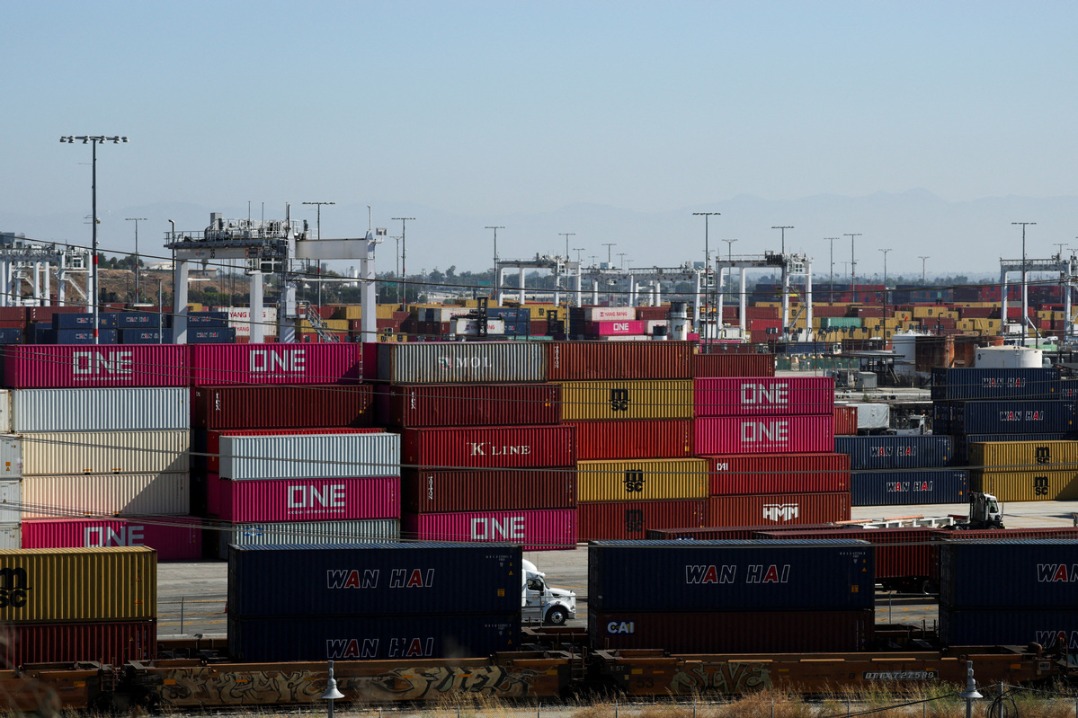China makes right move on trade bloc


China's request to join the Comprehensive and Progressive Agreement for Trans-Pacific Partnership is no surprise. In November last year, during an Asia-Pacific Economic Cooperation summit, President Xi Jinping said that China would actively consider the possibility of joining the regional trade group.
Developing countries would benefit from a rules-based international order that assists post-pandemic economic recovery.
As of September this year, the combined population of CPTPP member countries-Australia, Brunei, Canada, Chile, Japan, Malaysia, Mexico, New Zealand, Peru, Singapore and Vietnam-was around 500 million (6.7 percent of the world's population). Their overall GDP was roughly $13.5 trillion (13.4 percent of global GDP).
If China joins this trade bloc, it will enlarge the population to 1.9 billion (25 percent of the world's population), and the combined GDP will rise to $25.3 trillion (30 percent of global GDP).
When comparing the bloc with the Regional Comprehensive Economic Partnership-a bloc that represents the world's largest free trade area, comprises 2.2 billion of the world's population and has a combined GDP of $26.2 trillion, and of which China is the main architect-one may rightfully ask, what are the additional benefits of China's move to join the CPTPP?
On the surface, it might seem that joining the CPTPP may provide China with a means to defuse the ongoing economic conflict with the United States, started by former US president Donald Trump, who imposed a series of tariffs on Chinese products beginning in 2018.
However, in reality, China may be signaling that it is perhaps ready to open up its State-owned enterprises to market forces and adjust practices to international standards of competition.
For instance, by adopting CPTPP trade rules, China would in effect align its international trade policy with international norms. Among these are reforms of State enterprises and better protection of intellectual property and trade secrets.
China benefited considerably from the economic reform undertaken after its accession to the World Trade Organization, and joining the CPTPP may prove to be another watershed moment for China's economy. In essence, the CPTPP could reduce the trade tension between China and the US by letting market forces come into play.
After several years of uncertainties in international politics, characterized by the reemergence of unilateralism and protectionism, adverse economic effects have been felt across the world. Developing countries were the most severely affected, as they had been relying on international trade to deliver economic growth.
Rules-based, predictable competition can correct these uncertainties, allowing countries to look forward to the "new normal "after the COVID-19 pandemic.
While different commentators may have different interpretations of China's intention to join the CPTPP, a good policymaker will see an opportunity when there is one. Given that countries are slowly coming out of the lockdowns and resuming international travel to kick-start post-pandemic economic recovery, it is important to support China's application to join the CPTPP.
China's role in multilateralism needs to be acknowledged, so as to strike a balanced relationship that is mutually beneficial.
One should look to the Belt and Road Initiative for an example. The BRI brought China's economic diplomacy to the forefront, offering cheaper, more flexible standards and faster timelines to participating countries, which may lack borrowing capacity, in Southeast Asia and elsewhere.
The BRI and the Asian Infrastructure Investment Bank nonetheless brought much-needed investment to infrastructure-starved subregions of Asia. The AIIB would eventually develop further relationships with the Asian Development Bank and the World Bank as co-lenders of large infrastructure projects.
When the Group of Seven countries announced in June the Build Back Better World, or B3W, initiative, it was a correct move. The competition between the BRI and B3W may end up being mutually beneficial to developing countries, providing greater welfare, sustainable development and robust multilateralism.
It is for this reason that, as China has submitted an application to join the CPTPP, the US should also make a strategic international trade policy decision: It should rejoin the CPTPP. Healthy competition in a rules-based, multilateral order would be good for all nations, including developing countries, and can help promote post-COVID economic recovery.
The author is regional director of the Asia Centre, a Bangkok-based think tank.

































